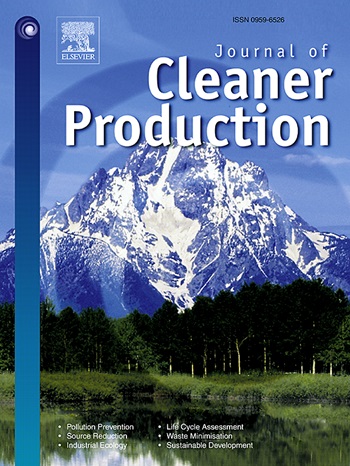Life cycle assessment of bacterial cellulose and comparison to other cellulosic sources
IF 9.7
1区 环境科学与生态学
Q1 ENGINEERING, ENVIRONMENTAL
引用次数: 0
Abstract
Bacterial cellulose (BC) is a 3D exopolysaccharide synthesized by certain acetic acid bacteria, possessing unique properties such as nanofibrillar morphology and high purity. BC has gained increasing attention for several potential market applications, including in textiles. However, along with techno-economic challenges, the industrialization of BC pulp must align with sustainable practices and minimize the environmental impact. To date, a comparative environmental assessment of BC pulp against plant-based celluloses (e.g. wood pulp or nanocellulose (NC)) or of BC-lyocell against cotton or man-made cellulose fibers (e.g. viscose and lyocell) has not been reported.
In this study, both BC pulp and BC-lyocell production were modelled for life cycle assessment (LCA). For BC pulp, the results were compared with nanocelluloses, using different life cycle impact assessment methods. For BC-lyocell, the results were compared with cotton, viscose, and lyocell fibres, using information available from the literature.
The major contributors to the environmental impact of both the BC pulp and BC-lyocell were the preparation of the culture medium, followed by cellulose washing and energy consumption. The BC pulp showed lower environmental impacts than NCs. BC-Lyocell exhibited a larger environmental impact than cotton, viscose, and lyocell in most of the environmental categories, except for land use and water depletion. Following a comprehensive impact and sensitivity analysis, several measures were identified to enhance the environmental performance of BC, such as exploring by-products for culture medium preparation and optimizing the use of chemicals (NaOH) and energy.
求助全文
约1分钟内获得全文
求助全文
来源期刊

Journal of Cleaner Production
环境科学-工程:环境
CiteScore
20.40
自引率
9.00%
发文量
4720
审稿时长
111 days
期刊介绍:
The Journal of Cleaner Production is an international, transdisciplinary journal that addresses and discusses theoretical and practical Cleaner Production, Environmental, and Sustainability issues. It aims to help societies become more sustainable by focusing on the concept of 'Cleaner Production', which aims at preventing waste production and increasing efficiencies in energy, water, resources, and human capital use. The journal serves as a platform for corporations, governments, education institutions, regions, and societies to engage in discussions and research related to Cleaner Production, environmental, and sustainability practices.
 求助内容:
求助内容: 应助结果提醒方式:
应助结果提醒方式:


